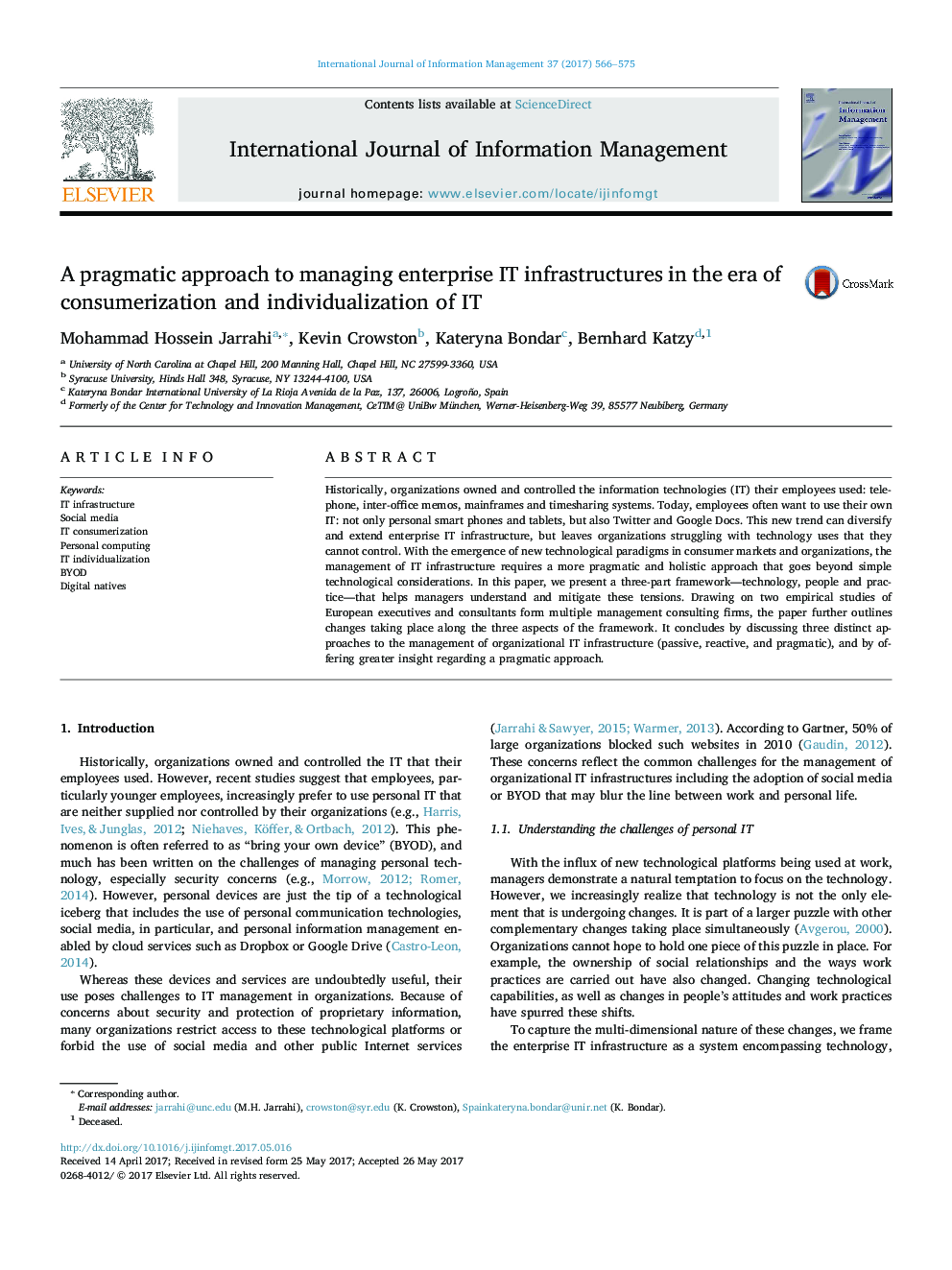| Article ID | Journal | Published Year | Pages | File Type |
|---|---|---|---|---|
| 5110751 | International Journal of Information Management | 2017 | 10 Pages |
Abstract
Historically, organizations owned and controlled the information technologies (IT) their employees used: telephone, inter-office memos, mainframes and timesharing systems. Today, employees often want to use their own IT: not only personal smart phones and tablets, but also Twitter and Google Docs. This new trend can diversify and extend enterprise IT infrastructure, but leaves organizations struggling with technology uses that they cannot control. With the emergence of new technological paradigms in consumer markets and organizations, the management of IT infrastructure requires a more pragmatic and holistic approach that goes beyond simple technological considerations. In this paper, we present a three-part framework-technology, people and practice-that helps managers understand and mitigate these tensions. Drawing on two empirical studies of European executives and consultants form multiple management consulting firms, the paper further outlines changes taking place along the three aspects of the framework. It concludes by discussing three distinct approaches to the management of organizational IT infrastructure (passive, reactive, and pragmatic), and by offering greater insight regarding a pragmatic approach.
Related Topics
Social Sciences and Humanities
Business, Management and Accounting
Management Information Systems
Authors
Mohammad Hossein Jarrahi, Kevin Crowston, Kateryna Bondar, Bernhard Katzy,
